Department of Industrial Engineering
4207 Bell Engineering Center
1 University of Arkansas
Fayetteville, AR 72701
Phone: (479) 575-3156
Fax: (479) 575-8431
Capstone 2022-2023
7th Annual Industrial Engineering Capstone Symposium
Arkansas Union Verizon Ballroom, University of Arkansas, Fayetteville
Wednesday, May 3, 2023
Symposium Exhibition and Breakout Presentations 10:45 AM – 11:45 AM
Industry Partner and Faculty Recognition Luncheon 12:00 PM – 1:00 PM
Symposium Exhibition and Breakout Presentations 1:15 PM – 4:15 PM
Student Awards Reception 4:30 PM – 5:00 PM
News Recap of 2023 Capstone Symposium
Improving Starting Price Point for Customer Re-Negotiations using XGBoost
Presentation Time/Location: 2:15 pm / Room 508/509
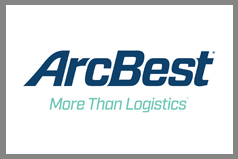
Student Team Leader: Abby Harris
Other Student Team Members: Zachary Oldham, Wesley Tate, Ernesto Serna and Jacob Boshears
Industry Partner: ArcBest
Industry Partner Contacts: Drew Caple, Manager - Pricing and Supply Chain Analytics; Erin Hills, Logistics Engineer II
ArcBest is a five-billion-dollar transportation and logistics company based in Fort Smith, AR. ABF Freight is ArcBest’s largest subsidiary and specializes in less-than-truckload (LTL) shipments, employing thousands of people. Roughly 50% of ABF’s clients use pricing structures that expire after one year, triggering a two-and-a-half-month re-negotiation process. This process is currently based heavily on an engineer’s experience or knowledge about a customer. The goal of our project is to find a way to streamline and standardize the beginning of this process by setting the initial price increase. Using past re-negotiation data provided by ArcBest, we grouped instances of customer re-negotiations into bins allowing XGBoost models to be built that predict the amount customers will negotiate. We then packaged these predictive models into an easy-to-use tool in R that allows an engineer to input customer account information and receive a starting point for their negotiations. This tool is expected to reduce the time it takes an engineer to complete the overall re-negotiation process.
Reducing Stock-outs in a Hospital Medication Dispensing System using Simulation Analysis
Presentation Time/Location: 10:45 am / Room 510/511
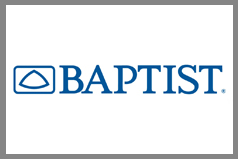
Student Team Leader: Carson Doss
Other Student Team Members: Armon Afrasiabi, Gabe Ellis, Will Plunkett and Dylan Deramus
Industry Partner: Baptist Memorial Health Care Corporation
Industry Partner Contacts: Katie Parker, Director of Performance Improvement; and Ben Eddlemon, Director of Pharmacy at DeSoto Hospital
Baptist Memorial Health Care Corporation (BMHCC) is network of hospitals spanning the greater Memphis area that started in 1912. Their network includes 22 hospitals with over 600 of the region’s leading specialists. Our project focuses on the Omnicell Medication Dispensing Cabinets within the DeSoto Hospital located in Southaven, Mississippi. BMHCC uses Omnicell cabinets to hold and dispense drugs to nurses and staff as needed. These Omnicell cabinets use different par levels for each medication stored within them. When a medication is at ‘par’, this means that the stock for the respective medication is full. However, a medication could completely stock-out, meaning its stock is at zero. BMHCC made it our focus to analyze different stock levels to work to minimize these stockouts. We created an Omnicell simulation in Arena. With our process analyzer, we were able to evaluate many combinations of par level versus demand levels. The results of the simulation populate a visual to prescribe par levels based on demand level and desired fill rate.
A Decision Support Tool to Automate and Optimize Contract Staffing using Linear Programming
Presentation Time/Location: 10:45 am / Room 508/509
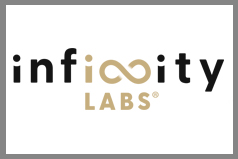
Student Team Leader: Paris Joslin
Other Student Team Members: Nathan Skinner, Will Cunningham, Conner Oxford and Zach Leondike
Industry Partner: Infinity Labs LLC
Industry Partner Contacts: Stephen Sieck, Senior Program Manager; and Nick Marquart, Co-Founder and Chief Analytics Officer
Infinity Labs LLC is a cutting-edge innovation company headquartered in Dayton, Ohio, that specializes in utilizing innovative modeling and simulation, cybersecurity, and training techniques to solve the hardest problems in the national defense industry. Since the launch of the company in 2020, Infinity Labs has experienced rapid growth with employees located across the United States. Due to the increasing number of employees and the complex nature of defense contracts, the staffing process has become time-consuming and requires a significant amount of effort from program managers. Infinity Labs has expressed the need for an automated tool that alleviates time constraints on program managers and ultimately balances employee utilizations. Our team designed a Microsoft Excel decision support tool that analyzes employee qualifications and contract requirements. The goal of our optimization model is to minimize the variability in employee utilizations in order to create a balanced workforce. The tool utilizes AMPL to solve a linear programming model to produce optimal staffing assignments. Using our tool, program managers are able to post-process the optimal assignments to fit business needs for the future months.
Developing a Priority Assignment Policy for the Empty Planner Application
Presentation Time/Location: 3:15 pm / Room 510/511
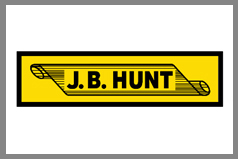
Student Team Leader: Bill Byers
Other Student Team Members: Jackson Barclay, Carter Christian and Joshua Walters
Industry Partner: J.B. Hunt Transport Services, Inc.
Industry Partner Contacts: Jessica Smith, Sr. Manager, Engineering & Technology; Sam Webb, Data Scientist, Engineering & Technology
J.B. Hunt Transport Services, Inc., is a Fortune 500 company located in Lowell, Arkansas, that provides a variety of freight transportation services for customers. J.B. Hunt has five different business units in operation: Intermodel (JBI), Dedicated Contacted Services (DCS), Integrated Capacity Solutions (ICS), Final Mile, and Truckload (JBT). For this project, we are focusing on supporting the decisions derived from an application developed by J.B. Hunt to aid dispatchers in the assignment of empty equipment throughout their daily operations. We did this by assigning numeric scores to each potential location to provide insight for where to assign drivers. We used Multi-Objective Decision Analysis (MODA) to understand the importance of different factors that are a part of the policy that we used to score each location and created a swing weight matrix to weigh the factors using stakeholder analysis. We reinforced the improvement of our metric of Unplanned Empty Moves with the use of simulation that created a baseline to show the current performance without the use of our policy. We then compared those results to another simulation that incorporates our policy to capture potential improvements. Finally, we created a VBA-based decision support tool that allows users to interact with the policy in real time to understand its outputs.
Linear Optimization for Driver-Route Assignment with Fatigue and Balanced Workload Considerations
Presentation Time/Location: 1:15 pm / Room 513/514
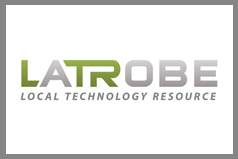
Student Team Leader: Andrew Freeman
Other Student Team Members: Katy Emerson, Nicolas Alcoreza, Sarah Wilson and Emmanuel Jean Paul De La Gala Gomez
Industry Partner: LATROBE LLC
Industry Partner Contacts: Latanyua Robinson, President and James Robinson, Vice-President
Latrobe LLC, founded in 2010 and headquartered in Memphis, Tennessee specializes in manufacturing consulting, light assembly and packaging, and shipping operations as an Amazon Delivery Service Partner (DSP). Latrobe’s DSP division is responsible for hiring, training, and assigning drivers their daily routes. Currently, Amazon provides a random initial daily assignment of drivers to routes. Latrobe’s coordinator makes changes based on their knowledge to improve the assignment each morning. Routes have a wide range of difficulty and poor assignments can cause the dual problem of underworked drivers and fatigued drivers. Our goal was to build a model that automatically highlights changes to reduce fatigue by balancing the workload fairly among drivers. We defined a linear program that considers the number of packages a driver delivered in the past few days as a measure of the driver’s fatigue. The model minimizes the deviation between each driver’s workload and the system average. The linear program was defined in Python and displayed in a user interface in PowerBI. The optimization model and visuals in the dashboard also provide the company with great insight into past performance and future improvement recommendations.
Analyzing and Predicting Marketing Campaign Performance Using Regression and Time Series Analysis
Presentation Time/Location: 2:15 pm / Room 513/514
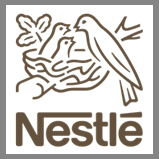
Student Team Leader: Agustin German Reichhardt
Other Student Team Members: Luke Tyler, Sam Nelson, Sebastian Alborta and Skyler Mantooth
Industry Partner: Nestlé
Industry Partner Contacts: Edosa Aibangbee - Manager, Customer eCommerce Account, Walmart Frozen; Megan McCoy - Category Manager, Strategic Planning and Insights, Walmart and Kara Puntriano - Senior Analyst Category Management
We partnered with Nestle’s Rogers, Arkansas, office to perform descriptive and predictive analysis on the sales of Nestlé USA brands and products such as DiGiorno frozen pizza. The project aimed to analyze sales and marketing data from 2019 to 2023. The sales data contained the dollar sales from 2019 to 2023 of each product sold by more than ten different brands, and the marketing data contained information on when and where advertisements for each specific brand were launched. The data also contained the media type of each advertisement. Using this information, we identified four different areas that could impact the ad performance in terms of sales, which include the media type of the ad, the time of launch of the ad, if competition ads were active at the same time, and if there was a major event active during the time the ad was running. With modern statistical techniques such as regression and time series analysis, we created a final report that will provide insight on the effectiveness and impact of each ad campaign, including media types and month of launch, that Nestlé can use when planning future ad campaigns.
Increasing Production Capacity and Efficiency through Technology Upgrades and Labor Allocation
Presentation Time/Location: 2:15 pm / Room 510/511

Student Team Leader: Ashley Stanek
Other Student Team Members: Ben Mitchell, Cody Bonds, Hudson McDiarmid and Rhett Caldwell
Industry Partner: National Safety Apparel - Arkansas
Industry Partner Contacts: Joey Roland, Plant Manager and Jennifer Gibson, Production Manager
National Safety Apparel is a company that creates quality clothing for those working in tough industries. Their Fort Smith, Arkansas, facility manufactures uniforms for the US Postal Service including various styles of shirts and pants. Our team is interested in increasing the production capacity and efficiency of the shirt assembly process by providing a decision support tool that will identify the bottlenecks and provide a resource allocation plan. By creating flow diagrams that represent how each style of shirt moves through the system and utilizing the SAM (standard average minute)/unit of each operation, we have identified the major bottlenecks in the system. We have created a Microsoft-Excel-based tool that will allow NSA-Arkansas to identify where to focus their improvement efforts and assist them in deciding which machines to upgrade based on the bottlenecks in the system. The tool will also take NSA-Arkansas's production goal and number of employees and output if the goal is feasible, the minimum number of employees necessary to accomplish the goal, and a suggested plan for the percent of time an employee should be assigned to each operation.
Using Simulation Analysis to Reduce Customer Sojourn Time in Tire and Battery Centers
Presentation Time/Location: 3:15 pm / Room 508/509
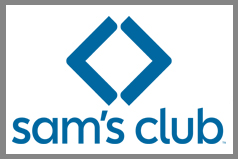
Student Team Leader: Jessica Creech
Other Student Team Members: Joshua Manson-Endeboh, Kaylee Harrison, Ronan McDonnell and Jacqueline Saldivar
Industry Partner: Sam's Club Tire & Battery Centers
Industry Partner Contacts: Mohamed Boudhoum: Senior Director of Tire & Battery Centers and Tim Gearhart: Project Manager III-Sam’s Club
Sam’s Club is a subsidiary of Walmart, Inc., that generates $80 billion annually using a membership-based business model. Customers pay an annual fee to be eligible to access the products and services that Sam’s Club offers including their grocery and retail shopping, health services, and tire and battery center. Sam’s Club offers customers in-person shopping at 600 locations across the United States; 582 of these locations offer multiple car repair services. These services include tire services, exchanging batteries, replacing windshield wipers, and restoring headlights. Sam’s Club has expressed concerns regarding the amount of time it takes to perform these services as well as the discrepancies in service times across locations. The goal of our project is to suggest improvements to the current system by analyzing the number of technicians performing each service given the number of bays available. To achieve our goal, we developed a simulation model in Arena using data that we collected via time studies. Our model allows technicians to float between vehicles to represent simultaneous technicians performing a service. The model allows us to find a new standard number of technicians for each service to reduce sojourn time without an increase in technician idle time.
Minimizing Changeover Time in Pet Food Production using Integer Programming
Presentation Time/Location: 1:15 pm / Room 508/509
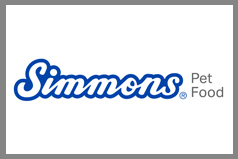
Student Team Leader: Ross Harper
Other Student Team Members: Halle Schneidewind, Griffin Langford, Danny Puente and Willow Franks
Industry Partner: Simmons Pet Food
Industry Partner Contacts: Ross Vandever, VP of Continuous Improvement; Cassie Warren, Continuous Improvement Manager and Jonathon Wilson, Project Manager in Pet Food Division
Founded in 1949, Simmons Foods, Inc., is a leading supplier of poultry, pet food, and animal nutrition products. Headquartered in Siloam Springs, Arkansas, Simmons Pet Food – a division of Simmons Foods, Inc. – is North America’s largest supplier of store brand wet pet food. Our focus is the scheduling process used to sequence the production of pet food batches. The current process is highly manual and lacks full visibility into accurate changeover times occurring between produced batches. Our team uses a predictive model fed by historical production data to better estimate these times. These estimates are used as a parameter in an optimization model with the objective of minimizing total changeover time during production. Using open-source optimization software and an optimization interface, our team expects to reduce the time to schedule production sequences by up to 25%. We also expect Simmons Pet Food to see reduced downtime and increased throughput as a result of lower changeover times.
Reducing the Cost of Inventory Counting with Improved Raw Material Storage
Presentation Time/Location: 10:45 am / Room 513/514
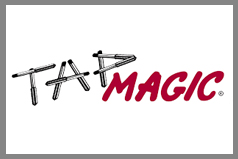
Student Team Leader: Whitney Hines
Other Student Team Members: Christopher Haywood, Jade Easter, Preston Boscamp and Rodolfo Bissot Stargardter
Industry Partner: Steco Corporation
Industry Partner Contacts: Ken Gaines, CEO and Louis Jaramillo, Operations Director
Steco Corporation is a small cutting fluids manufacturer located in Little Rock, Arkansas, that operates with only seven employees. Steco produces a line of cutting fluids called Tap Magic that helps to reduce friction on tools for various machine processes. Steco’s main concern involves their raw material inventory management. At the end of each month, limitations force Steco to perform a 100% blind count of all raw material inventory. This process takes 2-4 days to complete and results in a 91% inventory accuracy. We were tasked with providing a better inventory counting process that will minimize the time it takes to perform the count and increase overall inventory accuracy. We created a Microsoft Excel datasheet for our industry partners to use during the inventory count to track important information four months, the new data was used to calculate accuracy and identify items that were consistently inaccurate due to items being stored in multiple locations within the warehouse. We used the analysis to recommend that Steco invest in an RFID system, as well as use dedicated storage for consistently inaccurate items.
Developing A Monitoring Tool and Management Policy for University Research, Office and Conference Room Space
Presentation Time/Location: 1:15 pm / Room 510/511
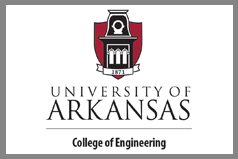
Student Team Leader: Tate Hasenclever
Other Student Team Members: Valerie Jackson, Foster Thompson, Kristoffer Olsen and Bowen Zhao
Industry Partner: University of Arkansas, College of Engineering
Industry Partner Contacts: Heather Nachtmann, PhD, Former Associate Dean for Research & Professor of Industrial Engineering and Kyle Cook, Facilities Manager
The University of Arkansas College of Engineering (CoE) adds social and economic value to the region, state, nation, and the world through engineering education and cutting-edge research in emerging technologies. With the wide variety of activities and recent growth, the CoE is beginning to see space constraining operations and is concerned about a future space shortage. To understand this problem, we began by performing external research, analyzing current data sources, and conducting stakeholder interviews. We learned that the space problem stems from the lack of a formal policy to set space standards, allocation procedures, and periodic review of space assignments. There also exists limited data insights or current metrics regarding space utilization. To improve space utilization for the CoE, our team developed a space management policy recommendation and a space management data monitoring tool. The recommended space policy outlines utilization metrics and targets by space type to inform CoE decision-makers on how to analyze and distribute space within the college. The data monitoring tool we created is a decision support dashboard that centralizes CoE space-related data and creates visualizations to gain insights and evaluate performance. Our hope is that this work will allow the CoE to make objective decisions as they adapt to future growth.